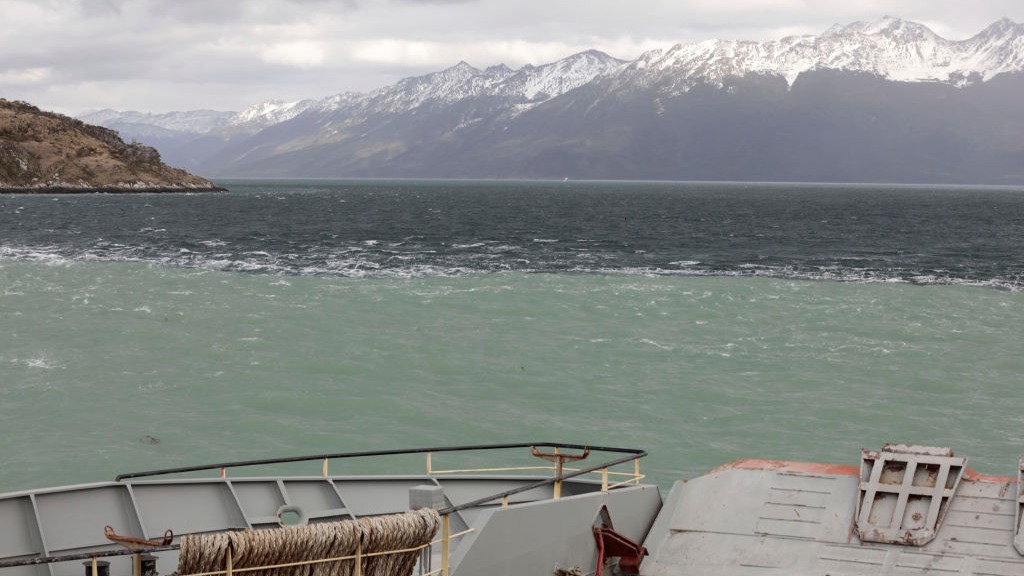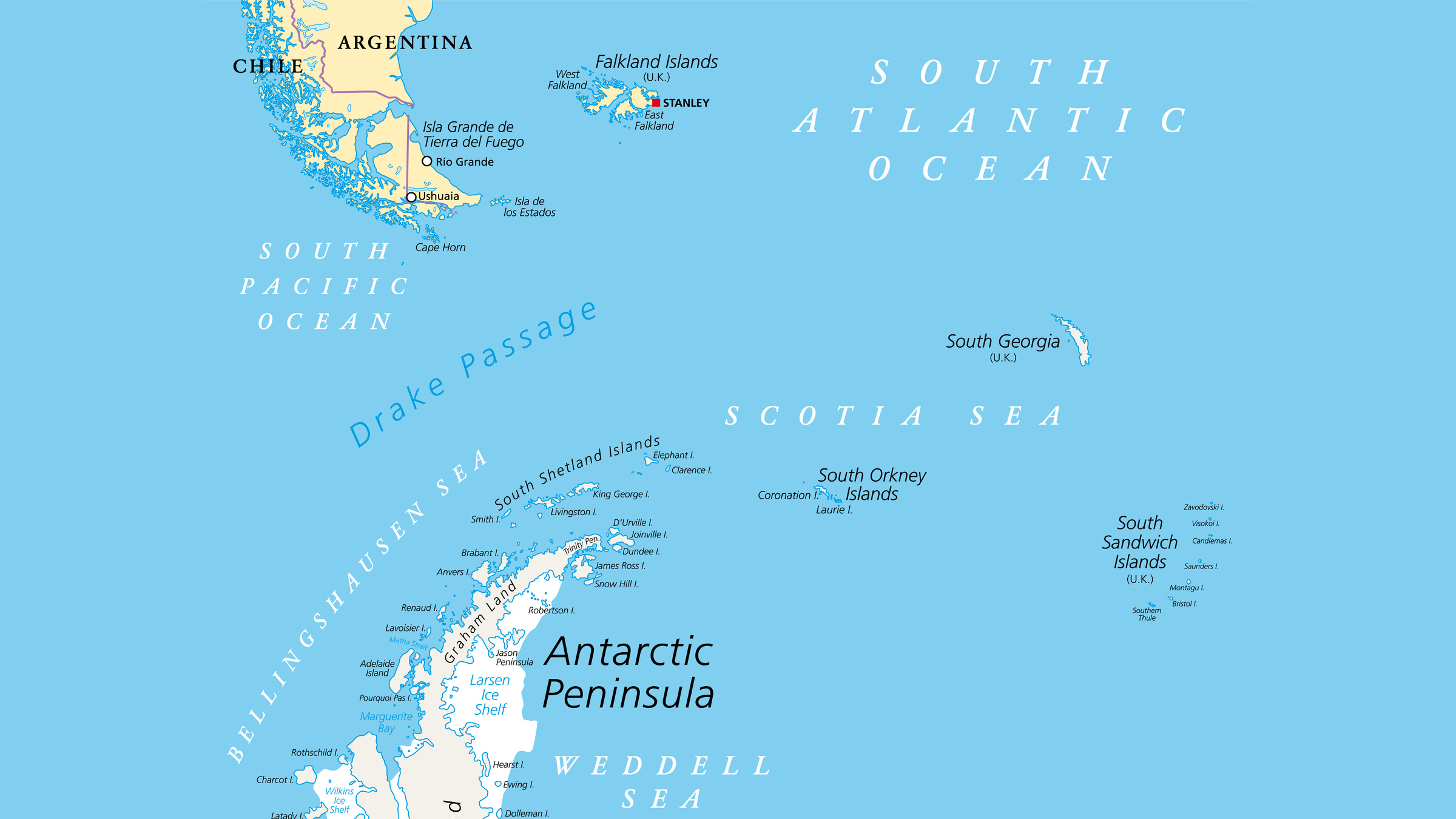
A handful of videos on YouTube and TikTok have been racking up likes by showing a strange line in the ocean, with dark water on one side and light water on the other.
Lines like this often appear where rivers or glaciers feed the ocean. But these popular videos also claim that these lines show a boundary between the Pacific Ocean and the Atlantic Ocean, and then use this as "evidence" to claim that the two oceans do not mix.
But is this actually true? Or do the Pacific and Atlantic oceans mix? "The short answer is yes! The waters are constantly mixing," said Nadín Ramírez, an oceanographer at the University of Concepción in Chile. The Pacific and Atlantic mix at different speeds in different places, and climate change may actually be changing those speeds.
Imagine watching a spiral of cream dissolve into coffee: The liquids mix, but slowly. That's approximately what's happening in pictures that show a line between different ocean waters. On one side, the water may be saltier, cleaner or colder; it takes time to average out those differences.
To speed things up, imagine stirring that coffee vigorously. The cream dissolves much faster. That's what happens in the ocean with strong winds and big waves.
Related: Where did ocean currents come from?
The Pacific and the Atlantic mix faster in some places than in others. The two oceans meet near the southern tip of South America, where the continent crumbles into a constellation of small islands. Between those islands, the water is relatively slow, and the Strait of Magellan is one popular route through. In the Beagle Channel, water from melting glaciers creates lines between freshwater and saltwater that look a bit like the lines in the YouTube videos.
Get the world’s most fascinating discoveries delivered straight to your inbox.
The Strait of Magellan is another popular route through. Where that strait empties in the Atlantic, Ramírez told Live Science, there is a line that is less visible to the eye, but that oceanographers can spot with measurements. On their graphs, "You can see a blue tongue of water in the Atlantic," he said. That water, which flows from the Pacific, is different because the Pacific gets more rain, so it's less salty. But it "stays separated just for a while," Ramírez said, and then, storms and waves blur the line.
In the open ocean between South America and Antarctica, the boundary between the Pacific and the Atlantic is famously choppy; the Drake Passage is known for waves that can reach 60 feet (18 meters) tall. "That improves the mix," Ramírez said.
Waters also mix in the ocean's depths. Daily tides drag water back and forth across the bumpy seafloor, said Casimir de Lavergne, a researcher at Sorbonne University and the French National Center for Scientific Research (CNRS). "That causes a lot of turbulence," he told Live Science.
But waters from different sources can also move around the ocean without mixing much at all. The ocean is "like a cake with different layers," Ramírez explained, "but the layers are water." These layers, which have different properties based on where the water came from, are called clines.
In the middle layer, away from both the surface and the seafloor, the waters mix more slowly because there is less turbulence.
Ocean researchers differentiate between mixing and exchanging water. Mixing means "that the waters are irreversibly transformed," de Lavergne said. When light cream swirls into dark coffee, it is fully mixed once the whole drink is the same color.
On the other hand, "You can exchange water masses without necessarily causing any real mixing of their properties," he said. Thanks to global currents, the Pacific and the Atlantic exchange water constantly.
A strong current around Antarctica's Southern Ocean pulls water clockwise through the Drake Passage from the Pacific to the Atlantic. It also pulls water from the world's ocean basins, "and then reinjects it," de Lavergne said. Another current moves water from the Pacific through the Indian Ocean and around the tip of South Africa to feed the Atlantic from the other direction.
Water is always mixing at the edges of these currents. But because the different layers do not mix completely, oceanographers can track different "packets" of water as they move around the globe. Now, de Lavergne said, human-caused climate change is slowing these currents.
"It seems to have already started, especially around Antarctica," he said. Cold, salty water sinks, accelerates and powers northbound currents. But the poles are warming. Warmer, fresher water from melting ice sheets doesn't sink as much, so the exchange of waters will slow.
The water mixing speed "seems to be slowing down as well," de Lavergne said. That's because when ocean clines differ more from one another, they take longer to average out. As ice sheets melt, "the density difference between the surface waters and the deep waters is increasing," he said.
These shifts are expected to change how the oceans cycle oxygen and nutrients, with impacts on sea life. But the oceans will never stop mixing or exchanging water entirely. "As long as there are some winds and some tides," de Lavergne said, "there's going to be mixing. There are going to be currents."
Editor's note: Updated at 2:38 p.m. EDT on July 3 to note that a so-called "line" between the two oceans appears in the Beagle Channel. Also, that a quote about a blue tongue of freshwater in the Strait of Magellan referred to the coloring of a graph, not to a visible difference as was previously stated.
Meg Duff is a freelance science journalist and audio producer based in Brooklyn. She holds an M.F.A from New York University's Arthur L. Carter Journalism Institute. Her stories have also appeared in Slate Magazine, Scientific American, MIT Technology Review, and elsewhere.




